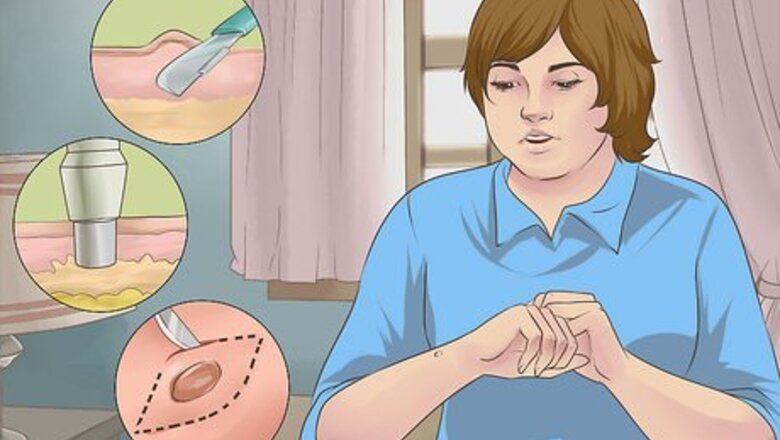
views
Treating the Biopsy Site after the Procedure
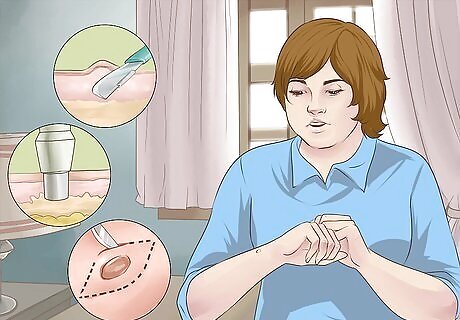
Determine the type of skin biopsy you have. Your doctor may use several different methods to remove skin for a biopsy. Determining which kind of biopsy you had can help you more effectively heal the site. A shave biopsy removes the top layers of skin, or epidermis and part of the dermis, with a tool that looks like a razor. Shave biopsies don’t usually require stitches. A punch biopsy removes a smaller and deeper section of skin than a shave biopsy. Larger punch biopsies may need stitches. An excisional biopsy removes a large section of abnormal skin with a scalpel. It’s common to need stitches to close an excisional biopsy site.
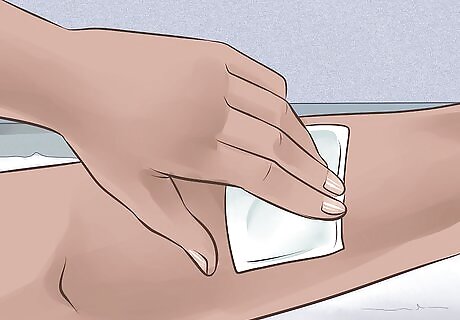
Cover the area with a bandage. Depending on the size of your biopsy site and if it continues to bleed after the procedure, your doctor may instruct you to keep the area covered with a bandage for a day or more. This will help protect the biopsy site and absorb any bleeding. If the area bleeds, simply apply a new bandage and some light pressure. If the bleeding is heavy or continues for a protracted period, contact your doctor.
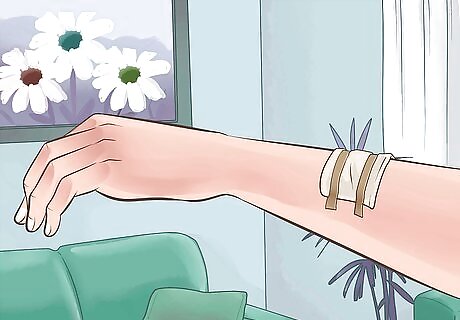
Leave bandages on for one day after the biopsy. For the day after your biopsy, leave on the original bandage your doctor used. Make sure to keep the bandages and area dry. This will help the site begin to heal and may keep bacteria from entering the wound. Make sure to keep the area dry for the first day after your biopsy. You can begin to shower and clean the site the day after the procedure.
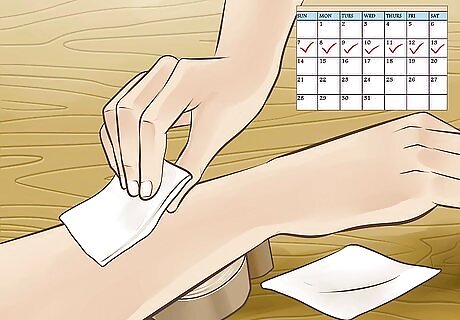
Change the bandages on the biopsy site daily. You should change the bandages protecting your biopsy site on a daily basis. This will help keep the area clean and dry and may prevent infection or serious scarring. Make sure you use a bandage that will allow the biopsy site to breathe. This will allow air to flow and help heal the wound. Make sure only the nonstick prat of the bandage touches the wound. You can get breathable bandages at most drug stores and at many grocery stores. Your doctor may also provide you with dressings for the wound. The average time for bandage use is 5-6 days but may be as long as two weeks. Continue to change bandages every day until you see no open wounds or your doctor instructs you to discontinue use. Depending on the type of biopsy you had, your doctor may instruct you not to use a bandage after the first day or another amount of time. This may be the case if you had stitches.

Wash your hands before touching the biopsy site. Any time you touch the biopsy site or change bandages, wash your hands thoroughly with soap and water. This will help ensure that you don’t spread any bacteria that may infect the incision site. You don’t need to purchase any special soap. Using any soap will work to disinfect your hands. Make sure to scrub your hands for at least twenty seconds in warm water.
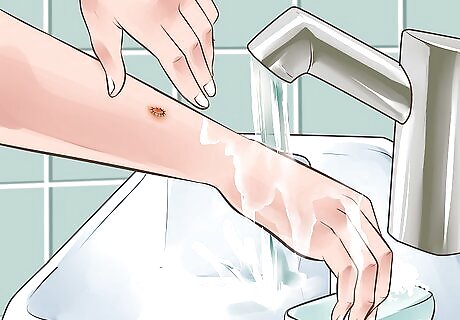
Keep the biopsy site clean. It’s important to keep the biopsy site clean while it is healing to help prevent infection. Washing the area daily should help keep bacteria from growing at the site. You don’t need any special soap to clean the biopsy site. Simple soap and water will effectively disinfect the area. If the biopsy site is on your head, use shampoo to clean the site. Make sure to rinse the biopsy site well with warm water. This will remove excess soap and not irritate the sensitive area. If the wound is otherwise fine and not infected, simply changing the bandages and washing the site daily is sufficient to keep it clean. Your doctor may recommend that you rinse it with something like hydrogen peroxide; follow your doctor's recommendations, but don't use anything on the wound without checking first.
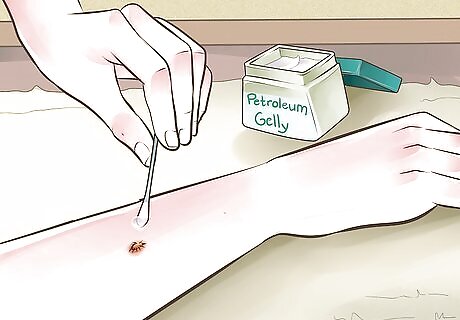
Apply an antibiotic ointment or petroleum jelly. Once you have cleaned the biopsy site, apply an antibiotic ointment or petroleum jelly if you've been instructed to do so by your doctor. Ointments help keep the wound moist and reduce scab formation, helping the wound to heal. Then, apply the bandage. Use a clean cotton swab or clean fingers to apply the ointment.
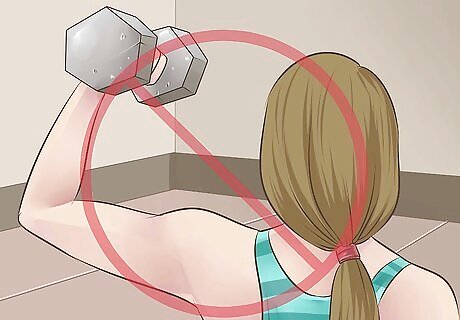
Avoid strenuous activity for a few days. In the first few days following your skin biopsy, refrain from strenuous activity such as heavy lifting or anything that may make you sweat profusely. These could not only cause bleeding and enlarge the scar that will develop, but may also irritate the sensitive skin. You should not do any strenuous activity for the entire time that you have stitches. If you can avoid it, don’t bump the biopsy site or do activities that may stretch your skin. This can lead to bleeding and stretching of your skin, which may result in a larger scar.
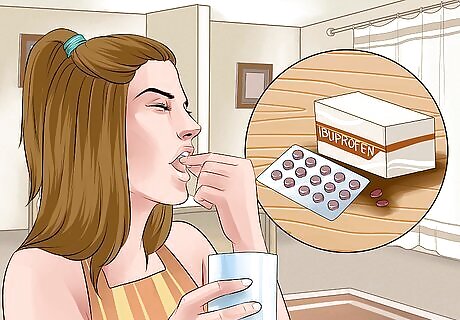
Take pain medication. It’s normal to have mild pain and soreness or tenderness at the biopsy site for a few days following the procedure. Use an over the counter pain reliever to help alleviate pain and possible swelling. Take over the counter pain relievers such as ibuprofen or acetaminophen. Ibuprofen may also help alleviate some of the swelling associated with the procedure.

Have your doctor remove the stitches. If your biopsy required stitches, make an appointment to have them removed by your doctor. It’s important to leave stitches in for the entire time your doctor suggests so that your wound heals properly and doesn’t leave a large scar. It’s not uncommon for stitches to itch. If this is the case, you can use a light layer of antibiotic ointment or petroleum jelly to relieve itching and help prevent infection. If the itching is bad, you an also apply a cool, wet washcloth to the area to help reduce itching.

See your doctor if problems arise. If you notice excessive bleeding, pus, or other symptoms of infection, such as redness, warmth, swelling, or fever, around the biopsy site, see your doctor immediately. This will ensure that you don’t have an infection and can ward off more serious complications. It’s normal for the biopsy site to bleed a little bit or drain pink fluid for a couple of days after the procedure. Excessive bleeding would include soaking a band-aid or bandage with blood. It usually takes several weeks to heal a biopsy site, but the healing should be complete within two months.
Caring for the Scar at the Biopsy Site
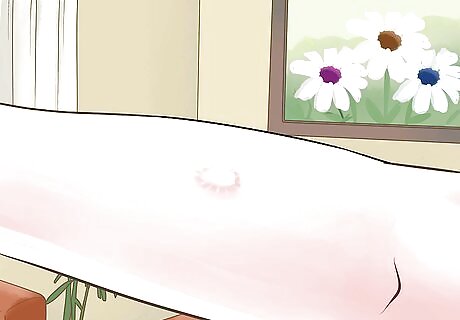
Be aware that all biopsy sites scar. Every biopsy will cause your skin to scar. Depending on the size of the biopsy site, it may be a large scar or one that only you notice. Taking care of the biopsy site and surrounding skin can help ensure that your scar heals properly and as minimally as possible. Scars fade gradually over time and the permanent color will only be visible one to two years after the biopsy.
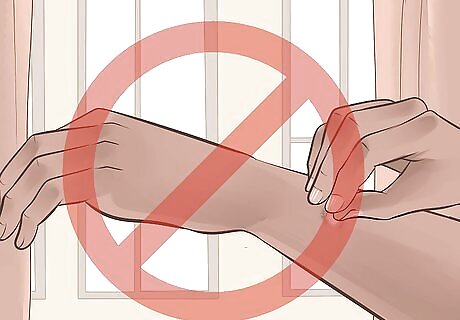
Don’t pick at the skin or wound. Your skin biopsy site may form a scab or may simply heal over into a scar. In either case, it’s important to not pick at a scab or skin to help it heal properly and not form a large scar. Picking at the skin or the wound can introduce bacteria into the wound and cause an infection.
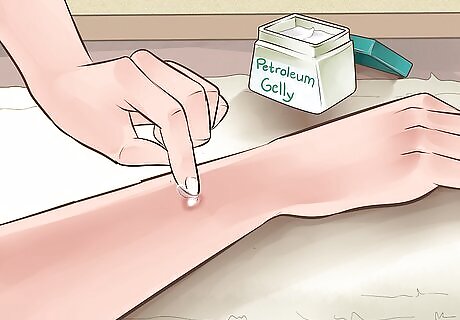
Keep the skin moist at all times. As the wound and scar heal, keep the area moist with an ointment such as petroleum jelly or antibiotic ointment. This will help ensure that the skin heals properly and that the scar doesn’t enlarge. The best way to keep the skin moist is to apply a light layer of ointment such as petroleum jelly or Aquaphor to the wound site 4-5 times per day. You can apply the ointment for 10 days or longer, if necessary. If you are still using a bandage on your biopsy site, apply the ointment first. You can get petroleum jelly or other ointments at most drug and grocery stores.
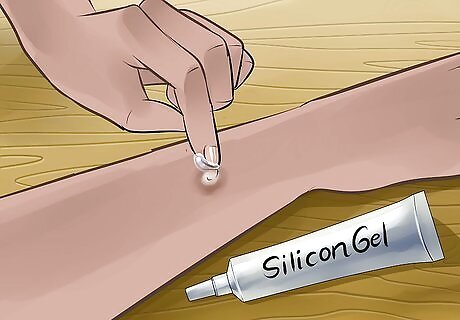
Apply silicone gel to heal scars. Recent studies suggest that applying a thin film of silicone gel may help heal scars. If you’re prone to forming keloids or hypertrophic scars, you may want to consider having your doctor prescribe silicone gel to help treat any scars or potential scarring. Keloids are raised and reddish nodules that may appear at the site of a biopsy or other injury. They occur in approximately 10% of the population. Hypertrophic scars resemble keloids and are more common. They may fade with time. Your doctor may be able to treat keloids or hypertrophic scars with a steroid injection. Silicone gels will hydrate your skin and allow skin to breathe. They will prohibit bacterial and collagen growth, with can affect the size of your scar. Children and persons with sensitive skin can usually use silicone gel films without a problem. Most patients can begin use of silicone gels within days after a wound closes. Once you get a prescription for silicone gel, you apply a thin film of it twice a day.

Avoid sun exposure or use sunscreen on the scar. The skin that forms as a scar is very delicate. Avoid sun exposure or apply sunscreen to help keep the scar from burning and minimize discoloration. Cover up the wound and scar to keep them protected from the sun. Use a high SPF sunscreen to help protect an exposed scar or biopsy site from burning and prevent it from discoloration.
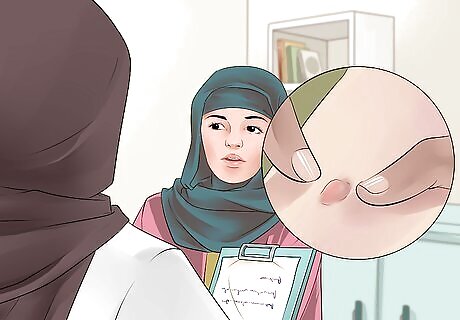
Ask your doctor if scar massage is right for you. In many cases, scar massage can be started about 4 weeks after the biopsy. It can help the scar heal more quickly and reduce its appearance. Ask your doctor to show you how to massage your scar. Scar massage can also help prevent scar tissue from adhesion, or sticking to the muscles, tendons, and other things beneath your skin. In general, use a slow, circular motion to massage the skin around your scar. Use firm pressure, but don't pull or tear at the skin. Massage 2-3 times a day for 5-10 minutes. Your doctor may also recommend using elastic therapeutic tape, such as Kinesio Tape, over your scar area once it has begun to heal. The movement of the tape can help keep the scar from adhering to the tissues below.

















Comments
0 comment